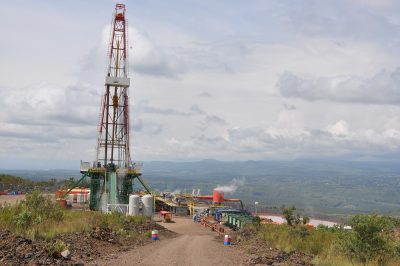Geothermal striving to escape shadow of other renewables and increase lobbying power
The geothermal power industry is fighting to escape the shadows of other renewable sectors and get financiers and lawmakers to take notice.
In the aftermath of GEA’s Geothermal Energy Finance Forum in New York last week, the industry sees some positive press. Among them Greenwire picked up on New York Times.
According to the article, “The geothermal power industry is maneuvering to escape the shadows of the wind, solar and biofuels sectors and get financiers and lawmakers to take notice.
But high up-front project costs and the impatience of investors keeps getting in the way, leaving industry with its hopes pinned on government grants and tax incentives.
Hoping to change its luck, the Geothermal Energy Association (GEA) held its largest gathering ever yesterday, drawing financiers, politicians and project developers to a posh hotel in Lower Manhattan. The gathering featured a lunchtime keynote speech by Senate Majority Leader Harry Reid (D-Nev.). GEA representatives capped the day by ringing the closing bell at NASDAQ.
The goal: “to let Wall Street know about the fundamentals of geothermal energy, which has … been around for more than 100 years,” said Arni Magnusson, executive director of sustainable energy at Islandsbanki, a major geothermal player in Iceland.
Iceland is famous for using geological forces below ground for power. About 30 percent of Iceland’s electricity needs are met with geothermal plants, the rest with hydropower, and nearly every Icelandic home is heated with a geothermal system. Iceland is also a major exporter of geothermal technology, explaining Islandsbanki’s interest in expanding the market.
Far less known is that the United States is already far and away the world’s largest home for geothermal. Of the roughly 10,000 megawatts of global geothermal capacity, about a third is in the United States, about 3,153 MW, according to GEA. Almost all of that is in California, with Nevada and Utah catching up.
“Nevada already has about 450 megawatts of conventional geothermal power in production,” Reid told the gathering yesterday. “In the next three to five years, with the right mix of incentives and policy, my state alone could add 64 new projects that would bring that number up to nearly 2,500 MW.”
Magnusson estimates that U.S.-installed capacity could easily double in the next five years as more projects come on line. But sustaining the momentum will require about $26 billion in fresh capital, money that geothermal developers have to compete with the wind and solar power industries to get.
GEA executive director Karl Gawell said Western states have the best potential for conventional geothermal power, which directly taps existing underground steam vents to spin turbines. A more unconventional and controversial technology proposes injecting water into super heated rock underground to generate the steam artificially.
Overall, advocates say, geothermal technology is proven and has distinct advantages over wind and solar. Geothermal power is a steady and reliable baseload, which electric utilities appreciate. And geothermal plants use less land than wind farms or solar arrays.
But Gawell admits major Wall Street investment banks shy away from geothermal because it takes years to see a return on investments. A Nevada project that came online last year took five years to complete, compared with a lead time of little more than a year for a standard wind farm.
“They’re realizing that geothermal can be a good investment,” Gawell said. “You’ve just got to stay in there a little bit longer.”
The geothermal industry has also gotten a late start at building lobbying power in Washington. Its support on Capitol Hill does not approach that given to the ethanol industry or other renewable energy technologies.
“They built a reputation up over decades, but I think that we’re getting there,” said Gawell in an interview. “We’re starting to get moving, and maybe in a number of years we’ll catch up. But at least you’re seeing that positive growth and excitement.”
The industry is especially excited about the $400 million in the federal stimulus law devoted to research into new geothermal technology. But a lack of certainty about what kind of heat resource can be found thousands of feet beneath the surface makes geothermal-well drilling riskier than oil and gas exploration. One in five wells turn out to be dry holes, so enhancing developers’ ability to read the underground potential is critical to enticing new investments.
Still, the industry seems to be expanding by leaps and bounds, and fast growth rates alone could be enough to draw in new capital. GEA estimates its industry is growing by about 15 percent annually.
Geothermal players are excited by predictions that capacity will shoot up to 10,000 MW in the United States as the nation’s energy needs grows.
By 2012, “we think the strategic landscape starts to change quickly,” said Paul Leggett, a vice president of investment banking at Morgan Stanley. “We do think the geothermal industry is ready for a takeoff.”
Source: NY Times











